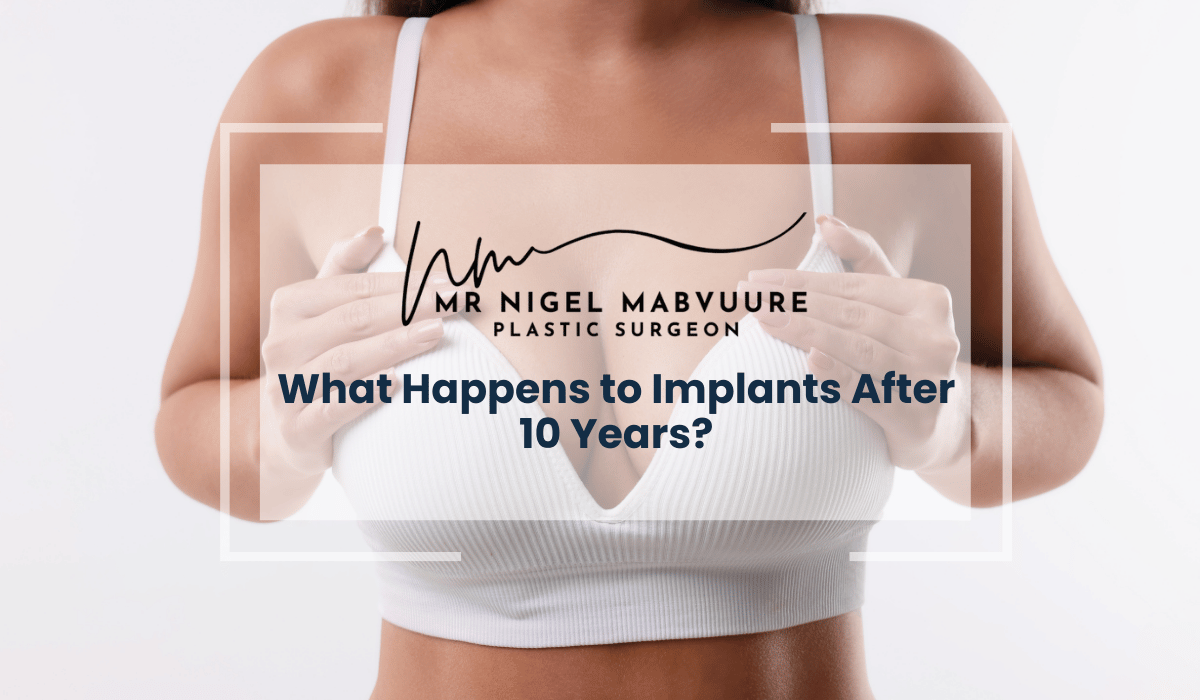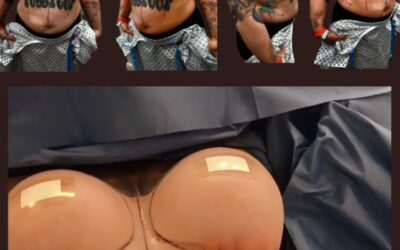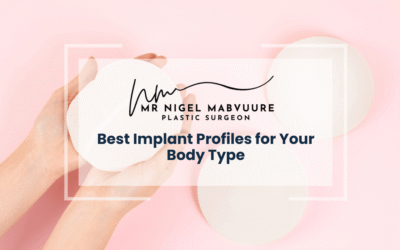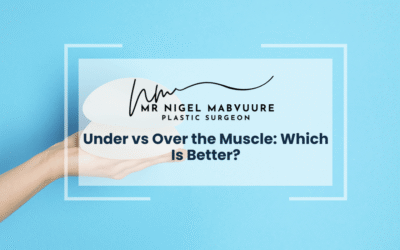Implants After 10 Years
- Implant Longevity: Modern breast implants are more durable and can often last beyond their 10-year warranty period when properly maintained.
- Individual Assessment: There is no universal replacement timeline; decisions should be based on personal health, implant condition, and professional medical evaluation.
- Regular Monitoring: Annual check-ups and appropriate imaging studies are crucial for detecting potential implant issues early.
- Warning Signs: Watch for changes like asymmetry, hardening, pain, or changes in breast sensation that might indicate a need for replacement.
- Cost Considerations: Implant replacement surgery ranges from £4,000 to £7,000, with various financing options available.
- Recovery Expectations: Replacement surgery typically requires 4-6 weeks of recovery, with most patients returning to light activities within two weeks.
- Long-Term Success: Many women successfully maintain breast implants for over 20 years with proper care and professional guidance.
Table of Contents
- Understanding the Lifespan of Modern Breast Implants
- Signs Your Breast Implants May Need Replacement
- The Truth About the 10-Year Replacement Rule
- Long-Term Effects of Keeping Original Implants
- Costs and Considerations for Implant Replacement
- What to Expect During Implant Replacement Surgery
- Living with Implants Beyond 20 Years
Understanding the Lifespan of Modern Breast Implants
Modern breast implants have evolved significantly in terms of durability and safety. Today’s implants are engineered to be more resilient and longer-lasting than their predecessors, with enhanced cohesive gel technology and stronger outer shells. While manufacturers typically warranty their implants for 10 years, many can remain intact and functional well beyond this period.
Several factors influence implant longevity, including implant type, placement technique, and individual patient characteristics. Silicone gel implants generally maintain their shape and consistency longer than saline alternatives, though both types have demonstrated impressive durability in clinical studies. Regular monitoring through mammograms and MRI scans helps ensure optimal implant performance throughout their lifespan.
Signs Your Breast Implants May Need Replacement
Vigilant monitoring of your breast implants can help identify potential issues early. Key physical changes to watch for include asymmetry, hardening of the breast tissue, changes in implant position, or visible rippling. Capsular contracture, characterised by the hardening of scar tissue around the implant, remains one of the most common complications requiring attention.
Pain, discomfort, or changes in breast sensation warrant immediate consultation with your surgeon. Modern imaging techniques can detect silent ruptures in silicone implants, which may not be immediately apparent through physical examination alone. Regular check-ups with your plastic surgeon are essential for maintaining optimal implant health and addressing any concerns promptly.
The Truth About the 10-Year Replacement Rule
The widely cited 10-year replacement rule originated from early implant warranties and historical data. However, current medical evidence suggests that prophylactic replacement at the 10-year mark isn’t necessarily required for all patients. Instead, decisions about implant replacement should be based on individual assessment factors, including implant integrity, patient satisfaction, and overall breast health.
At our clinic, we evaluate each case individually, considering factors such as implant type, placement technique, and patient-specific characteristics. This personalised approach ensures that replacement surgery is performed only when medically necessary or desired by the patient, rather than adhering to an arbitrary timeline.
Long-Term Effects of Keeping Original Implants
Understanding the long-term implications of maintaining original implants is crucial for informed decision-making. While many implants can safely remain in place beyond their warranty period, patients should be aware of potential complications such as capsular contracture, implant displacement, or changes in breast appearance over time.
Regular monitoring through appropriate imaging studies helps detect any deterioration or complications early. The natural aging process, weight fluctuations, and hormonal changes can affect breast appearance regardless of implant age, making it important to distinguish between normal changes and implant-related issues.
Costs and Considerations for Implant Replacement
Implant replacement surgery represents a significant investment, with costs varying based on procedure complexity, surgical technique, and geographical location. In the UK, prices typically range from £4,000 to £7,000, encompassing surgical fees, anaesthesia, facility costs, and the implants themselves.
While most insurance providers don’t cover cosmetic breast procedures, they may contribute to costs if the replacement is deemed medically necessary. Various financing options are available to help manage expenses, including payment plans and medical finance programmes. Additional costs to consider include pre-operative assessments, post-operative care, and potential time off work during recovery.
What to Expect During Implant Replacement Surgery
Replacement surgery typically takes 1-2 hours under general anaesthesia. The procedure often utilises existing incision sites to minimise additional scarring. Modern surgical techniques focus on preserving breast tissue and maintaining natural aesthetics while addressing any complications from the original implants.
Recovery generally spans 4-6 weeks, with most patients returning to light activities within two weeks. Post-operative care includes wearing a surgical bra, following specific movement restrictions, and attending scheduled follow-up appointments to monitor healing progress.
Living with Implants Beyond 20 Years
Many women successfully maintain their breast implants well beyond the 20-year mark. Long-term satisfaction often correlates with proper maintenance, including regular check-ups and prompt attention to any concerns. Aging with implants requires ongoing awareness of breast health and potential changes in implant position or appearance.
Quality of life considerations remain paramount, with most patients reporting sustained satisfaction when their implants continue to meet their aesthetic goals without complications. Regular breast cancer screening and implant monitoring become increasingly important as both patient and implant age.
Frequently Asked Questions
How long do breast implants typically last?
Modern breast implants are designed to last 10-20 years, with many remaining intact and functional beyond their initial warranty period. The actual lifespan depends on factors like implant type, placement, and individual patient characteristics. Regular monitoring through imaging studies helps assess implant integrity.
Do I need to replace my breast implants after 10 years?
The 10-year replacement rule is outdated. Implant replacement should be based on individual assessment, not an arbitrary timeline. Consult with your plastic surgeon to evaluate implant condition, checking for signs of complications or changes in breast appearance that might necessitate replacement.
What are the signs that breast implants need to be replaced?
Key indicators include asymmetry, hardening of breast tissue, visible rippling, changes in implant position, persistent pain, or discomfort. Capsular contracture, silent ruptures, and changes in breast sensation are also important signs to watch for during regular check-ups.
How much does breast implant replacement surgery cost?
In the UK, breast implant replacement surgery typically ranges from £4,000 to £7,000. Costs include surgical fees, anaesthesia, facility charges, and implants. Insurance may cover medically necessary replacements, and financing options are often available to help manage expenses.
What is the recovery time for breast implant replacement surgery?
Replacement surgery recovery typically takes 4-6 weeks. Patients can usually return to light activities within two weeks. The procedure takes 1-2 hours under general anaesthesia, with post-operative care involving wearing a surgical bra and following specific movement restrictions.
Can I keep my original breast implants for more than 20 years?
While possible, long-term implant maintenance requires careful monitoring. Many women successfully keep implants beyond 20 years with regular check-ups and prompt attention to any changes. However, ongoing breast health screening and implant assessment become increasingly important with time.
What is the difference between silicone and saline implants in terms of longevity?
Silicone gel implants generally maintain their shape and consistency longer than saline implants. Both types have improved durability with modern manufacturing techniques. The choice between silicone and saline depends on individual preferences, body type, and recommendations from your plastic surgeon.




